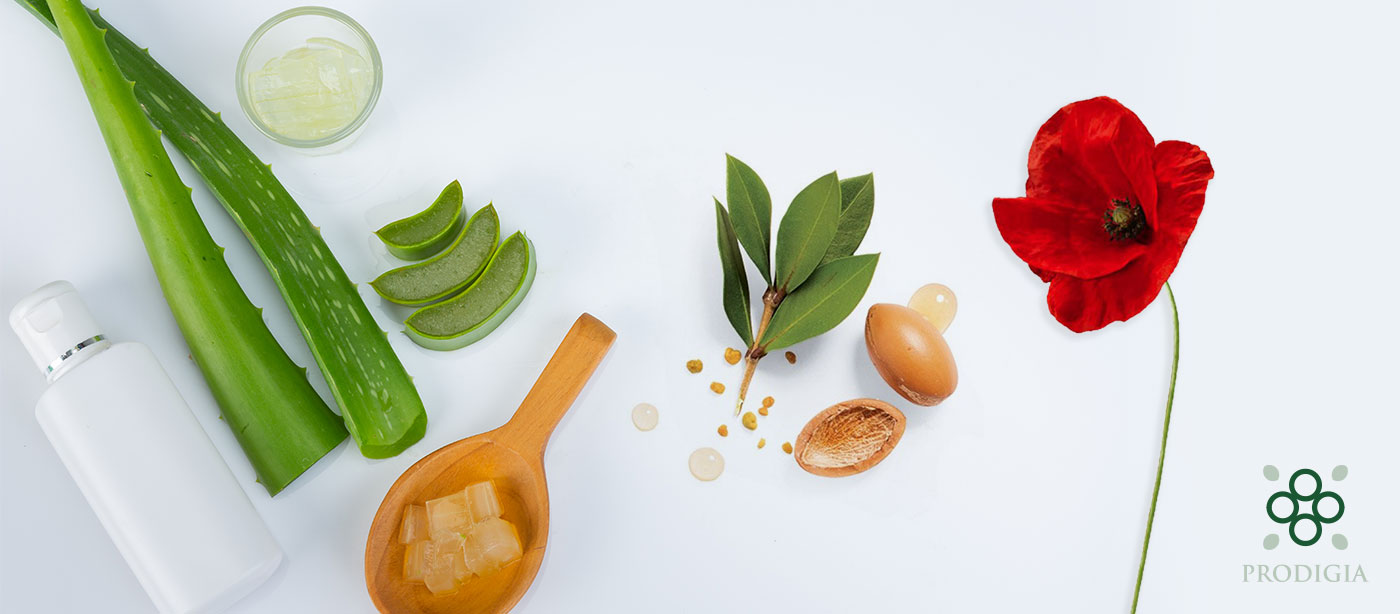In the field of natural cosmetics, the difference between the products lies in the origin of their ingredients, their quality, their quantity, and the processes of transformation and manufacture of the cosmetic product. Natural extracts, key ingredients of natural cosmetics, also include several kinds. Discover through this article, the differences between natural extracts: certified organic, conventional and wild growing.
1. Natural extracts certified “Organic”
Criteria for the “Organic” certification: A cosmetic product can be labeled “organic cosmetic” if it is composed of:
At least 95% of physically processed agro-ingredients (PPAI) must be organic; example: essential oils, vegetable oils, etc.
At least 20% of products from organic farming in the formula for leave-in products (10% for rinse-off products).
The cosmetic transformation and manufacturing processes must also meet strict rules: they must be non-polluting and respectful of health and the environment.
Obtaining the “Organic” certification: The certification is obtained from independent bodies -certification organizations, after carrying out the necessary audits. Organic labels are very profitable from a commercial and marketing standpoint, and in particular the private Ecocert benchmark. Discover our article on certifications and labels in natural cosmetics.
The difference between “Organic” and “Natural”: Everything organic is partly natural (there are certain synthetic ingredients allowed), but not everything natural is necessarily organic. In the cosmetology market, extraction processes are very important: they must not denature the product and must not be toxic to health and the environment. Authorized processes are, for example, maceration, decoction, steam distillation, fermentation, etc.). We will soon devote an article to explain in more detail the difference between organic and natural.
2. Conventional cosmetic products:
The majority of conventional cosmetic products can be derived from natural products but their concentration in pesticide is not assessed. They can also be derived from synthetic ingredients or of animal origin. More than 80% of cosmetics on the market are said to be conventional.
In order to know the composition of a “conventional” cosmetic product and to identify the origin of the raw materials which compose it, it is necessary to have an advanced knowledge of the INCI names (ingredients appearing on the back of the label) as well as the production flowcharts for each of the raw material in the product. Those are not readily available for end-users.
3. Natural extracts from wild harvest:
These are plants that grow naturally, sometimes even without being planted by humans. By default, pesticides are not used. However, these wild products are neither standardized nor certified.
Wild picking is difficult to regulate; which makes it difficult to trace the origin of a natural extract made from it. That said, it is respectful of the environment, and allows us to take advantage of the richness that nature offers us. The most famous natural extracts from wild harvest in Morocco are: red poppy powder (Aker Fassi) and in some cases Argan.
Are you looking for raw materials to make your natural cosmetic products? Prodigia is here to supply you with natural extracts, and many other high quality materials sold in bulk. We are also here to support you in the creation of your brand of natural cosmetics as part of our full service in private label.



